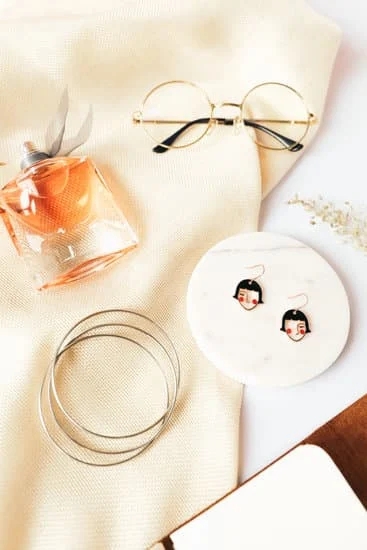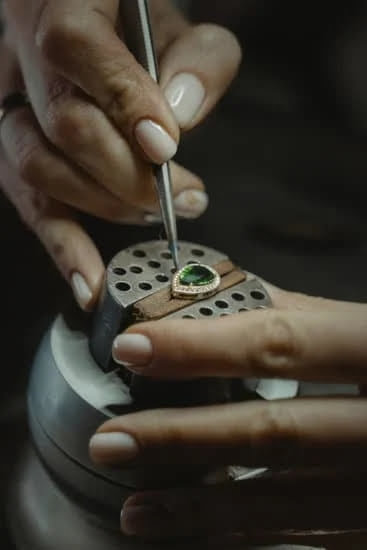The history of spiny oyster jewelry dates back centuries, with its origins deeply rooted in the cultural and artistic traditions of indigenous communities. Spiny oyster jewelry, crafted from the shells of spiny oysters, holds great significance in various cultures around the world. In this article, we will explore the rich history and cultural importance of spiny oyster jewelry, including its geological origin, symbolic significance, evolution over time, techniques and artistry involved, notable pieces, modern trends, and conservation efforts.
Spiny oyster jewelry encompasses a diverse range of designs and styles that have been cherished and valued by different indigenous communities for generations. The intricate craftsmanship and unique techniques used in creating spiny oyster jewelry reflect not only the skill of the artisans but also the deep cultural meanings attached to these pieces. From traditional adornments to contemporary fashion statements, spiny oyster jewelry continues to captivate and inspire individuals all over the world.
In this article, we will delve into the geological origin of spiny oysters, their cultural and symbolic importance in different indigenous communities, as well as the evolution and development of spiny oyster jewelry over time. We will also showcase notable pieces of spiny oyster jewelry that have made a significant impact on the jewelry industry and discuss modern trends in spiny oyster jewelry.
Additionally, we will highlight the conservation efforts aimed at protecting the spiny oyster population and its vital role in sustaining the jewelry industry. Join us on this fascinating exploration of the captivating history of spiny oyster jewelry.
Geological Origin of Spiny Oysters
Spiny oysters, also known as Spondylus, are found in the Sea of Cortez, off the coast of Baja California. They have been used for jewelry making for centuries due to their vibrant and alluring colors, ranging from deep purple to bright orange and red. These shells are highly sought after for their unique and striking appearance, making them a popular choice for creating stunning pieces of jewelry.
The Sea of Cortez is not only renowned for its rich marine life but also for being the primary source of spiny oysters. The shallow waters provide the ideal conditions for these mollusks to thrive, resulting in an abundant supply of spiny oyster shells for jewelry production. The region’s environmental conditions have made it a prime location for harvesting these shells, which are then crafted into exquisite jewelry pieces that showcase the natural beauty of the spiny oyster.
In addition to their geological origin, spiny oysters hold immense importance in jewelry making due to their versatility and cultural significance. Indigenous communities have long valued these shells as a symbol of wealth and status, incorporating them into traditional adornments such as necklaces, earrings, and bracelets.
The use of spiny oysters in indigenous jewelry reflects a deep connection to nature and an appreciation for the natural resources provided by the sea. Understanding the geological origin and cultural significance of spiny oyster shells provides valuable insight into their role in jewelry making throughout history.
Overall, the geological origin of spiny oysters plays a crucial role in their importance as a material for jewelry making. Their unique colors and cultural significance make them a prized component in creating exquisite pieces that hold historical and aesthetic value. As we delve deeper into the history of spiny oyster jewelry, it becomes evident that these shells have left an indelible mark on the artistry and craftsmanship of indigenous communities while captivating modern audiences with their timeless allure.
Cultural and Symbolic Importance of Spiny Oyster Jewelry
Spiny oyster jewelry holds a rich historical and cultural significance in various indigenous communities, dating back hundreds of years. In Native American cultures, spiny oyster shells have been used to create exquisite jewelry pieces that are revered for their symbolic meaning and spiritual significance. These vibrant shells were believed to hold protective and healing properties, making spiny oyster jewelry an integral part of traditional ceremonies and rituals.
Native American Traditions
Among the Native American tribes of the Southwest, such as the Navajo, Zuni, and Hopi, spiny oyster jewelry has been intricately woven into their traditions. The striking red and orange hues of the spiny oyster shell are considered emblematic of the earth and the sky, representing vitality and balance within the natural world.
As a result, spiny oyster jewelry has been used in ritualistic practices to connect with ancestral spirits and offer protection to its wearers. This connection to nature is deeply ingrained in Native American culture, making spiny oyster jewelry an essential element of their heritage.
Central American Influence
In addition to its prominence in Native American cultures, spiny oyster jewelry also plays a significant role in Central American traditions. Among the Indigenous peoples of Mexico, including the Zapotec and Mixtec communities, spiny oysters were highly prized for their brilliant coloration and were often incorporated into ornate jewelry pieces worn during important ceremonies and celebrations. The use of spiny oysters in adornments symbolized status, wealth, and spiritual reverence in these ancient cultures.
The historical significance of spiny oyster jewelry extends beyond its material value; it serves as a testament to the enduring cultural heritage and traditions of indigenous communities across North America. The intricate craftsmanship and symbolic meanings associated with spiny oyster jewelry continue to be honored and preserved by artisans and collectors worldwide today.
Evolution of Spiny Oyster Jewelry
Spiny oyster jewelry has a rich cultural and historical significance, dating back centuries in various indigenous communities. The evolution of spiny oyster jewelry has been influenced by the changing trends, techniques, and craftsmanship over time. This section will delve into the development and changes in spiny oyster jewelry throughout history, shedding light on its transformation from a traditional craft to a contemporary fashion statement.
Early History and Traditional Use
Spiny oyster shells have been used for adornment and as a form of currency by indigenous peoples such as the Native American tribes of the Southwest for centuries. The shells were treasured for their vibrant coloration and were often used in heishi necklaces, earrings, and other jewelry pieces. The early history of spiny oyster jewelry is rooted in the cultural traditions and spiritual beliefs of these communities, with the shells holding symbolic significance in ceremonies and tribal rituals.
Adaptation and Influence
As spiny oyster jewelry gained recognition beyond indigenous communities, it began to undergo changes influenced by external factors such as trade, tourism, and fashion trends. The introduction of new tools, materials, and design influences from other cultures led to the adaptation of traditional techniques and the incorporation of spiny oyster shells into contemporary jewelry styles. This shift allowed for greater creativity and experimentation with different metals, gemstones, and artistic motifs while still honoring the roots of spiny oyster jewelry.
Contemporary Revival
In recent years, there has been a resurgence of interest in spiny oyster jewelry due to its unique aesthetic appeal and cultural significance. Contemporary artisans are combining traditional methods with modern design elements to create innovative pieces that appeal to a broader audience. Additionally, there is a growing appreciation for the historical value of vintage spiny oyster jewelry pieces, contributing to their revival in both traditional Native American markets as well as mainstream fashion outlets.
The evolution of spiny oyster jewelry reflects not only changes in fashion trends but also the preservation of cultural heritage through craftsmanship and artistry. As we continue to celebrate the legacy of this distinctive form of adornment, it’s essential to recognize its enduring impact on both indigenous traditions and contemporary aesthetics.
Techniques and Artistry
Spiny oyster jewelry has a rich history dating back centuries, with indigenous communities incorporating the vibrant shells of spiny oysters into their traditional jewelry making. The intricate craftsmanship and unique techniques involved in creating spiny oyster jewelry are a testament to the skilled artistry of the artisans who have upheld this tradition.
One of the key techniques used in crafting spiny oyster jewelry is the lapidary process, which involves cutting and shaping the spiny oyster shell into beautiful beads, cabochons, and inlays. This process requires precision and attention to detail to bring out the natural beauty of the shell. Additionally, silversmithing and metalworking techniques are often employed to create settings for spiny oyster pieces, adding another layer of artistry to the finished jewelry.
Artisans also utilize various decorative methods such as etching, stamping, and oxidizing to enhance the beauty of spiny oyster jewelry. These decorative techniques not only add visual interest to the pieces but also showcase the artistic expressiveness of the creators. Whether it’s a bold statement necklace or a delicate pair of earrings, each piece of spiny oyster jewelry is a testament to the skilled hands that brought it to life.
The artistry involved in creating spiny oyster jewelry extends beyond mere craftsmanship; it embodies cultural heritage and individual creativity. The intricate designs and techniques reflect both traditional practices and contemporary innovation, making spiny oyster jewelry a truly unique art form with a timeless appeal.
| Spiny Oyster Jewelry Techniques | Artistry |
|---|---|
| Lapidary Process | Cultural Heritage |
| Silversmithing | Individual Creativity |
| Decorative Methods | Contemporary Innovation |
Notable Spiny Oyster Jewelry Pieces
The history of spiny oyster jewelry is a rich tapestry woven with cultural significance and artistic expression. Throughout the ages, spiny oyster shells have been transformed into stunning pieces of jewelry, cherished for their vibrant colors and symbolic importance. From ancient civilizations to modern fashion trends, spiny oyster jewelry has left an indelible mark on the jewelry industry.
- Navajo Squash Blossom Necklace: One of the most iconic symbols of Native American jewelry, the Navajo squash blossom necklace often features striking spiny oyster shell beads. These necklaces are revered for their intricate silverwork and large, intricately carved spiny oyster pendants.
- Zuni Inlay Earrings: The Zuni people are renowned for their exquisite inlay work, incorporating vibrant spiny oyster shells into their intricate designs. These earrings often feature geometric patterns and colorful combinations of spiny oyster, turquoise, and other gemstones.
- Santo Domingo Heishi Bracelet: The Santo Domingo Pueblo is famous for its heishi jewelry, which includes delicate beads made from various materials such as shell, turquoise, and spiny oyster. These bracelets showcase the natural beauty of spiny oyster shell in a timeless and elegant style.
- Contemporary Designer Pieces: Modern jewelers have continued to elevate spiny oyster jewelry with innovative designs that appeal to a global audience. From statement necklaces to minimalist earrings, contemporary designers have reimagined the use of spiny oyster shell in bold and unexpected ways.
The impact of these notable pieces extends beyond mere adornment – they serve as a testament to the enduring allure of spiny oyser jewelry. As collectors’ items or everyday accessories, these pieces continue to inspire and captivate audiences around the world. Whether preserving traditional techniques or pushing the boundaries of creativity, these notable examples exemplify the timeless appeal of spiny oyser jewelry throughout history.
Modern Trends in Spiny Oyster Jewelry
Spiny oyster jewelry has a rich history that dates back centuries, with its roots deeply embedded in the cultural and symbolic traditions of various indigenous communities. Despite its long-standing presence in the world of jewelry, spiny oyster jewelry is experiencing a modern resurgence of interest, making its mark in contemporary fashion trends.
In recent years, there has been a growing appreciation for the unique and vibrant colors of spiny oyster shells, leading to an increased demand for spiny oyster jewelry in the fashion industry. This resurgence can be attributed to a combination of factors, including a renewed interest in traditional and artisanal craftsmanship, as well as a preference for authentic and ethically sourced materials.
Furthermore, the versatility of spiny oyster jewelry allows it to seamlessly blend with modern styles and aesthetics. From bohemian-inspired designs to minimalist and sleek creations, spiny oyster jewelry has found its place in a wide range of fashion trends. Whether incorporated into statement necklaces, bold earrings, or elegant bracelets, spiny oyster jewelry adds a touch of natural beauty and cultural significance to any ensemble.
As this resurgence continues to gain momentum, designers and artisans are exploring innovative ways to incorporate spiny oysters into their creations. This includes experimenting with new techniques and forms of craftsmanship that bring out the inherent beauty of these precious shells. With the current emphasis on sustainability and ethical sourcing in the fashion industry, spiny oyster jewelry offers a compelling option for those seeking environmentally conscious yet stylish accessories.
- Spiny oyster shell is available in an array of colors such as reds, purples, oranges
- Modern designers are incorporating spiny oyster shell into statement rings
- Artisans are experimenting with combining spiny oysters with other materials such as silver or gold
Conservation Efforts and Spiny Oysters
In conclusion, the history of spiny oyster jewelry is rich and diverse, with deep cultural and symbolic significance in various indigenous communities. The geological origin of spiny oysters, their evolution in jewelry making, and the intricate techniques involved in creating these pieces highlight the craftsmanship and artistry that have been passed down through generations. The notable spiny oyster jewelry pieces showcased throughout history have left a lasting impact on the jewelry industry, influencing modern trends and contemporary fashion.
One of the most pressing issues surrounding spiny oyster jewelry is the conservation efforts to protect the spiny oyster population. With increased interest in these beautiful shells for jewelry making, there has been a growing concern about overharvesting and its impact on the natural population of spiny oysters. Conservation efforts are crucial to ensure the sustainability of this resource for future generations and to maintain its significance in the jewelry industry.
As we continue to appreciate and celebrate the beauty and cultural importance of spiny oyster jewelry, it is essential to acknowledge our responsibility to support conservation efforts. By protecting the natural habitat of spiny oysters and promoting sustainable harvesting practices, we can preserve this valuable resource for both cultural heritage and artistic expression. The future of spiny oyster jewelry depends on our commitment to conservation, ensuring that this unique tradition continues to thrive for years to come.
Frequently Asked Questions
What Does the Spiny Oyster Symbolize?
The spiny oyster symbolizes wealth, fertility, and protection in various Native American cultures. It is often used in jewelry-making and other crafts to bring these positive attributes into the lives of the wearers.
Where Does Spiny Oyster Come From?
Spiny oysters primarily come from the warm waters off the coasts of Mexico, particularly from the Gulf of California. They are also found in parts of the Caribbean and along the coast of Florida.
Why Is Spiny Oyster So Expensive?
Spiny oyster is considered expensive due to its scarcity and the labor-intensive process of harvesting and preparing it for use in jewelry and crafts. Additionally, its vibrant colors and unique patterns add to its desirability and cost in the market.

Welcome to my jewelry blog! My name is Sarah and I am the owner of this blog.
I love making jewelry and sharing my creations with others.
So whether you’re someone who loves wearing jewelry yourself or simply enjoys learning about it, be sure to check out my blog for insightful posts on everything related to this exciting topic!





